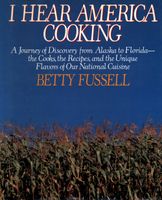Advertisement
Preparation info
- Serves
6 to 8
. - Difficulty
Medium
Appears in
Published 1986
Although the entire eastern seaboard abounded in clams with thick hard shells and clams with thin “soft” shells, English colonists did not hold them in high repute. The word “clam,” in fact, related to “clamp” and “cramp,” was an Anglo-Saxon generic term for all kinds of bivalves, and bivalves even in neolithic Britain were a main source of food only for “very poor and backward groups of people,” Anne Wilson tells us in


